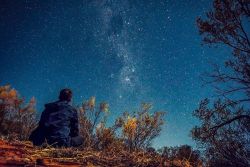A planned city as the Australian capital
Canberra is the capital city of Australia. The city is located in the Australian Capital Territory (ACT), an enclave in the south-east of New South Wales. As the capital, Canberra is the seat of the constitutional bodies of the Australian state, including its ministries, administrations and courts. Furthermore, it offers many national monuments, museums and galleries.
Historically, there is a tradition between Melbourne and Sydney. In 1908, when it came to which of the two cities would become the capital, neither of the cities could cope with the idea of the other becoming the capital, so the compromise solution was simply to build a city in between, which would become the new capital. So the planned city of Canberra became the new capital in 1927. After the Second World War a strong population growth began, which continues to this day.
City structure based on geometric motifs and aligned to landmarks
Leaving the rainy Sydney I took the bus for about 3.5 hours to Canberra, which is located exactly between Melbourne and Sydney and is one of the few Australian cities that are not located on the coast. Many tourists and even Australians don't visit its capital as it has the reputation of being boring. There's basically just 1 hostel in the whole city. Yet the concept of the city is quite interesting. Its structure is based on geometric motifs such as circles, hexagons and triangles. It is aligned on axes that are based on topographic landmarks and was built around a large artificial lake. The design of the city is influenced by the principles of the garden city movement and incorporates significant areas of natural vegetation.
Cold Canberra
As the city is almost 600 metres above sea level, it is one of the coolest cities in the country. I reached the city in mid-June, around the beginning of winter. Early in the morning, temperatures were often only a few degrees above zero, even minus degrees and snow may occur. On Sunday afternoon I made a short walk through the city centre. And it was almost completely empty. The center was decorated with winterly lighting and everywhere there were metallic (animal) sculptures. The next day I explored the city which offers a bus that runs free of charge to all tourist attractions. Nevertheless I was almost the only passenger. It was a sunny day, but still very cold. The trees had already shed all their leaves and looked dry and naked.
Huge Australian Flag towering the National Parliament
First I drove to the Australian National Parliament, which you can also visit for free. Above it towers a huge Australian flag on a 81-metre steel mast weighing tons. The principal design of the structure is based on the shape of two boomerangs. Before entering, everything is of course checked, just like at the airport. The building looks even more beautiful from the inside. The main foyer contains a marble staircase and leads to the Great Hall, which has a large tapestry on display. The House of Representatives chamber is decorated green, while the Senate chamber has a red colour scheme.
From the platform above you can look at the Black Mountain. The Parliament was aligned in a straight line to it. It is connected via the ANZAC Parada, where also many of the other attractions are located on the straight line between the Parliament and this mountain, as some museums and the War Memorial that I visited afterwards. First I thought it was only a big memorial, but it also contains a museum worth seeing about the military history of the country. Inside the memorial, many rose petals remind on the fallen Australian soldiers.
Early in the morning I went to bed because the cold weather wore me out and I wanted to return to Melbourne the next morning. I enjoyed my 2 days in Canberra but that was just enough. The city misses the vibrant spirit of Melbourne or Sydney.

